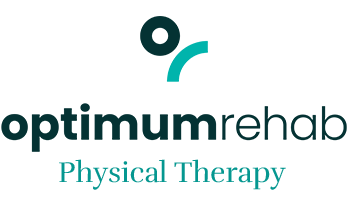TMJ disorders
Home > Treatments > TMJ disorders
Downtown office
NY 10004
Monday – Friday
08:00 AM – 07:00 PM
Midtown office
NY 10016
Monday – Friday
08:00 AM – 07:00 PM
Downtown office
26 Broadway, Suite 931,
NY 10004
Monday – Friday
08:00 AM – 07:00 PM
Midtown office
274 Madison Ave, Suite 1001,
NY 10016
Monday – Friday
08:00 AM – 07:00 PM
19%
lower odds of premature death for adults with a primary care provider
67B
would be the annual amount US save If everyone saw a primary care provider
33%
adult with a primary care saves, over people who only see specialists
TMJ disorders
What is TMJ disorders?
TMJ dysfunctions are conditions affecting your jaw joints and surrounding muscles and ligaments. These conditions can cause several issues, including jaw pain, headaches and difficulty opening and closing your mouth.
Types of TMD (temporomandibular joint dysfunction) :
Healthcare providers classify TMDs into three categories :- Disorders of your jaw joints.
- Disorders of your chewing muscles.
- Headaches that result from TMD.
Symptoms :
TMJ symptoms vary widely and may include :
- Jaw pain.
- Facial pain.
- Shoulder or neck pain.
- Stiffness in your jaw.
- Difficulty opening or closing your mouth.
- Jaw popping or clicking.
- Headaches.
- Migraines.
- Earaches.
- Toothache.
- Tinnitus (ringing in your ears).
Causes:
TMJ causes may include :
- Jaw injury (like a broken or dislocated jaw.
- Teeth grinding or clenching (bruxism).
- Arthritis in your jaw joint.
- Malocclusion (when your teeth don’t fit together exactly as they should).
- Stress.
Treatments :
The TMJ treatment that’s right for you depends on several factors, including the underlying cause and the severity of your pain. Providers usually try noninvasive options first, like medications or nonsurgical treatments. If your symptoms don’t improve, you might need jaw surgery.
Physical Therapy :
Your physical therapist may use various treatments for your TMD. These treatments are designed to decrease inflammation and pain, improve posture, improve jaw mobility, and help you regain normal function of your jaw. Treatments may include many potential methods for rehabilitating your joint.
Application of Heat or Ice :
Heat may be used on your jaw to relax muscles and decrease pain and muscular spasm. Ice is sometimes used for TMD to decrease inflammation and pain around your jaw.
Ultrasound :
Ultrasound is a treatment used in PT to provide deep heat to tissues and improve cellular mobility.
Massage :
Massage may be applied to your jaw muscles, facial muscles, and neck and shoulder muscles. The goal of massage is to relax muscles and improve circulation to them, allowing for a normal motion to occur in your temporomandibular joint.
Temporomandibular Joint Mobilizations :
Mobilizations can restore normal joint motion and may help relocate a displaced articular disc in your jaw joint.
Postural Instruction :
Sitting or standing with a forward head and rounded shoulder posture may place excessive stress and strain on your jaw joint. If your PT assesses that your posture is contributing to your jaw dysfunction, he or she may instruct you in proper posture.
Exercises :
Exercise for your jaw is one of the most important components of your TMD treatment program. Your PT will likely prescribe exercises to improve that way your jaw opens and closes. He or she may have you use a mirror so you can see how your mouth and jaw are moving and so you can ensure that they remain in proper alignment while exercising.
Our Physical Therapy experts at Optimum provide the best treatment based on your health condition and time constraint to get you relieved from your pain.
We have treatments for:
Trusted Expertise
Primary care doctors are health experts uniquely trained to guide you through all stages of life.
24/7 Care
We’ve got you covered with same day care at our clinics, as well as quick access to your medical information online.
For Everyone
Certified family physicians, internists, physician assistants and nurse practitioners, we have a team of experts for you.
